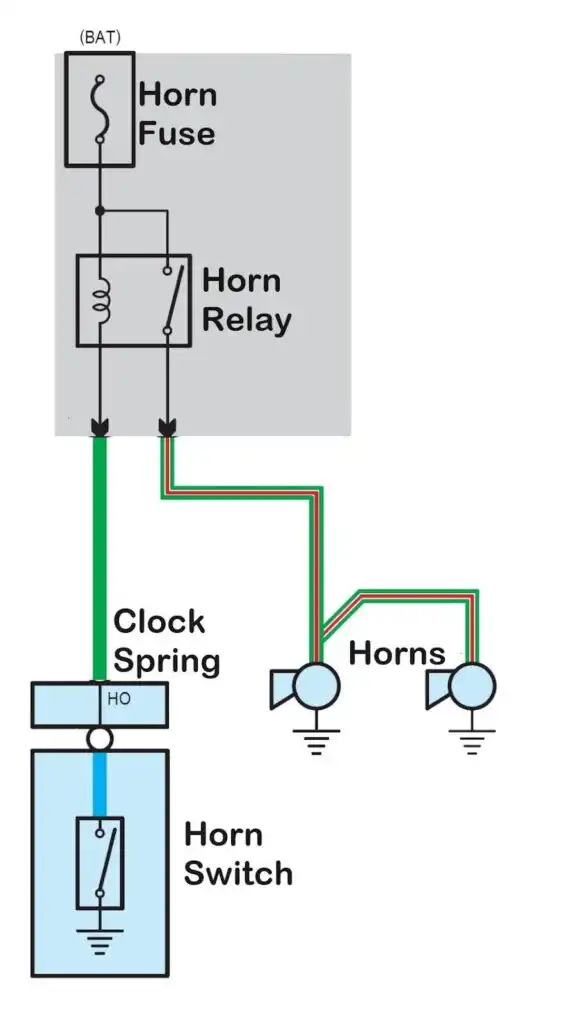Repair instructions
How To Fix Your Car Horn
Overview
Fixing a faulty car horn is a vital task for any vehicle owner, as it impacts both safety and legal compliance. A functional horn is crucial for alerting other drivers and pedestrians of potential dangers. In this guide, we’ll explore the necessary steps, tools, and potential costs involved in diagnosing and repairing a car horn.
1. Prepare the Necessary Tools
Before diving into the repairs, gather essential tools to make the process smoother. You’ll need:
- Fuse Puller or Pliers: For removing fuses safely.
- 12 Volt Test Light: To check for voltage and current.
- Replacement Parts: Depending on your diagnosis, this may include a new horn, fuse, or relay.

Pro Tip: For electrical issues like horns and lights, a low impedance test light is generally more effective than a multimeter. It provides a simultaneous check for voltage and current, simplifying your troubleshooting.
2. Inspect the Horn Fuse
A blown fuse is often the primary culprit behind a non-functional horn. To check the fuse:
- Locate the horn fuse using the vehicle’s manual or fuse box cover diagram. It may be in the under-dash fuse box or under the hood.
- Remove the fuse using your fuse puller or pliers.
Pro Tip: If a fuse is blown, identify the underlying cause to prevent future blowouts. Common issues may include short circuits in shared circuits like the lighter or auxiliary power ports.
3. Check the Horn Relay
If the fuse checks out, the next step is examining the horn relay, typically found under the dashboard or in the engine compartment.
- Listen for Clicking: When pressing the horn, listen for a relay click. A clicking sound indicates the relay is trying to work but might still fail to deliver power.
- Swap with a Known Good Relay: If available, replace the relay with another of the same part number to see if this resolves the issue.
Pro Tip: Use your test light to check for B+ hot wires and grounds. Ensure that when you press the horn switch, you can confirm ground connectivity at the relay and horn.
4. Examine the Horn Switch
The horn switch, typically located on the steering wheel, can also be a source of trouble.

- Access the Switch: This often requires removing the steering wheel cover. If you’re unfamiliar with this process, consult a mechanic to avoid damaging the airbag system.
- Test the Switch: Using your test light, verify if the switch receives ground and check if it passes ground when activated.
5. Check the Horn
The horn itself may be faulty. Here’s how to test it:
- Disconnect the horn from its wiring.
- Use the test light between ground and the horn trigger wire. If the light illuminates when the horn button is pressed and the horn is grounded, the horn likely needs replacement.
Pro Tip: Ensure all terminal contacts are clean and free of rust before reconnecting.
6. Test the Horn Circuit
Inspect the wiring for any issues, such as frayed, cut, or rodent-chewed wires, that could hinder horn operation.
7. Look for Other Symptoms
Additional symptoms, like an illuminated airbag light or malfunctioning steering wheel controls, could indicate a more significant issue with the clockspring.
- Recommendation: If other systems are affected, consult a professional, as clockspring replacement can be complex.
Pro Tip: A weak-sounding horn typically points to a bad ground or faulty terminals.
8. Can You Drive With a Faulty Car Horn?
Driving without a working horn is both dangerous and illegal in many states. For instance, states like Washington, Arizona, and Florida mandate that a horn be audible from at least 200 feet. Violating this requirement can lead to fines or citations.
9. How Much Does It Cost To Fix a Car Horn?
Repair costs vary based on the vehicle’s make and model, but generally expect to pay between $10 to $95 for horn repairs or replacements.
Conclusion
Fixing a car horn involves a series of methodical checks and requires minimal tools. By following these steps, you can diagnose and potentially resolve issues with your car horn, ensuring it functions correctly for your safety and compliance with the law. If you encounter complex problems, don’t hesitate to consult a profess
